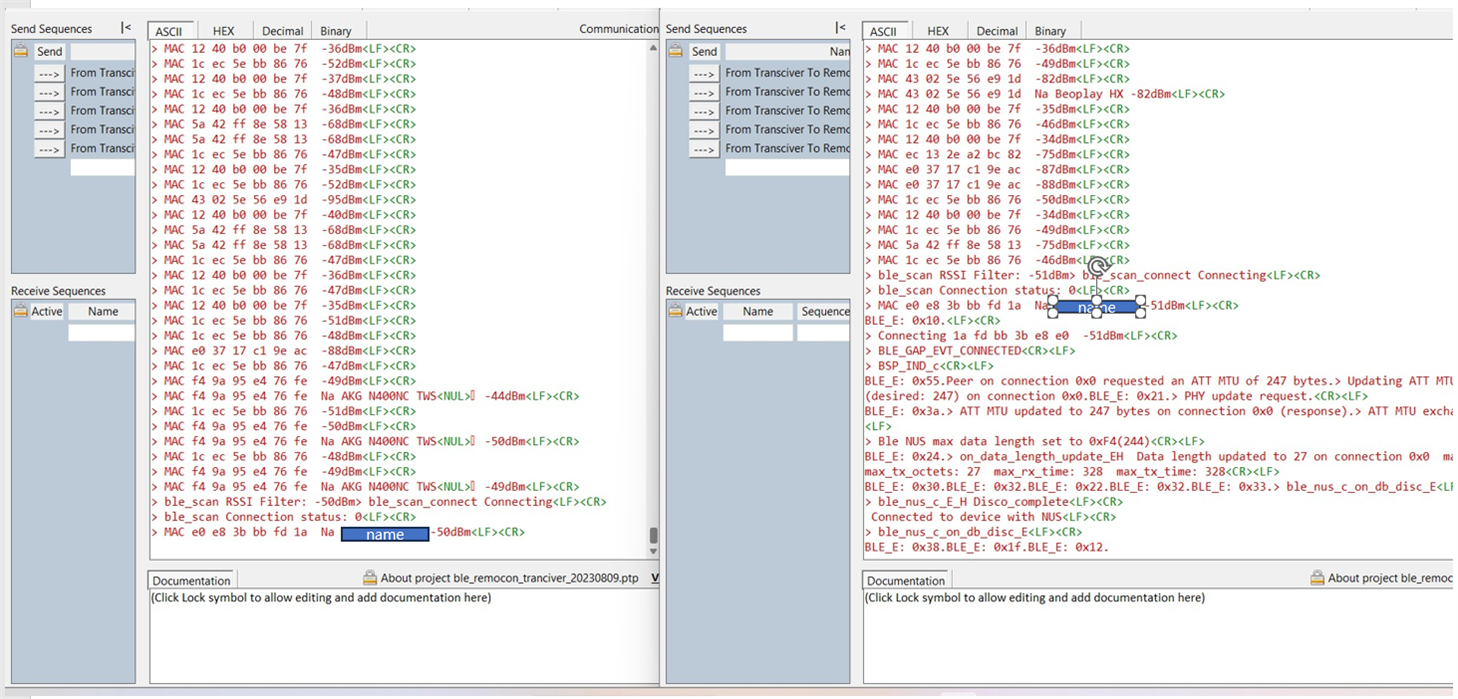hello.
I have two NUS Centrals running at the same time. BLE Scan continues to run during standby.
static void scan_start(void)
{
ret_code_t ret;
printf("> Scanstart ");
ret = nrf_ble_scan_start(&m_scan);
APP_ERROR_CHECK(ret);
Bsp_led_indication_Scanning_clr();
ret = bsp_indication_set(BSP_INDICATE_SCANNING); // connection LED
APP_ERROR_CHECK(ret);
}
One connection is made to the Central, and the other one stops while scanning.
There is no problem with other operations, only the BLE Scan stops.
Also, is there a way to check whether BLE SCAN is operating and restart it if BLE SCAN is stopped?




